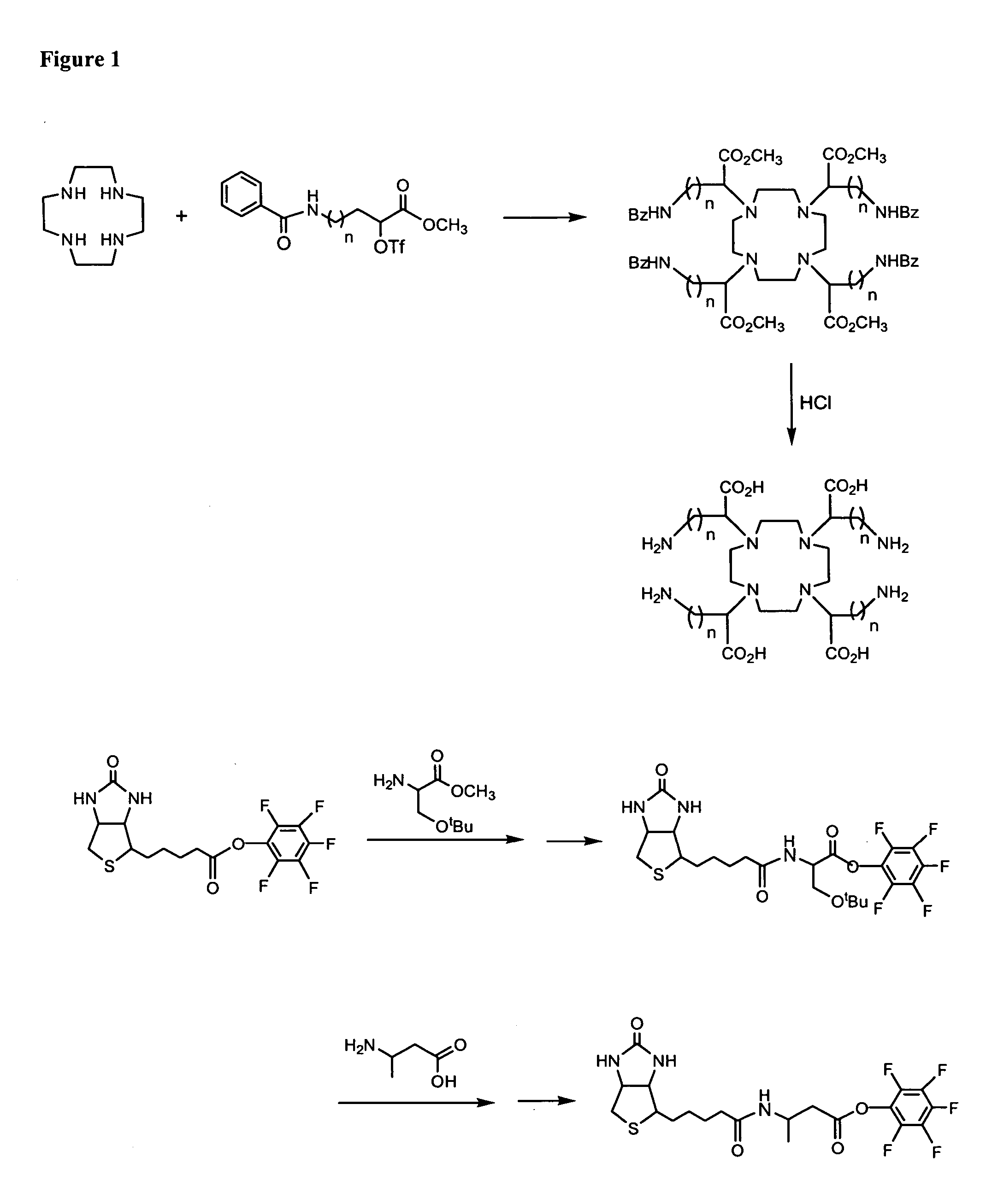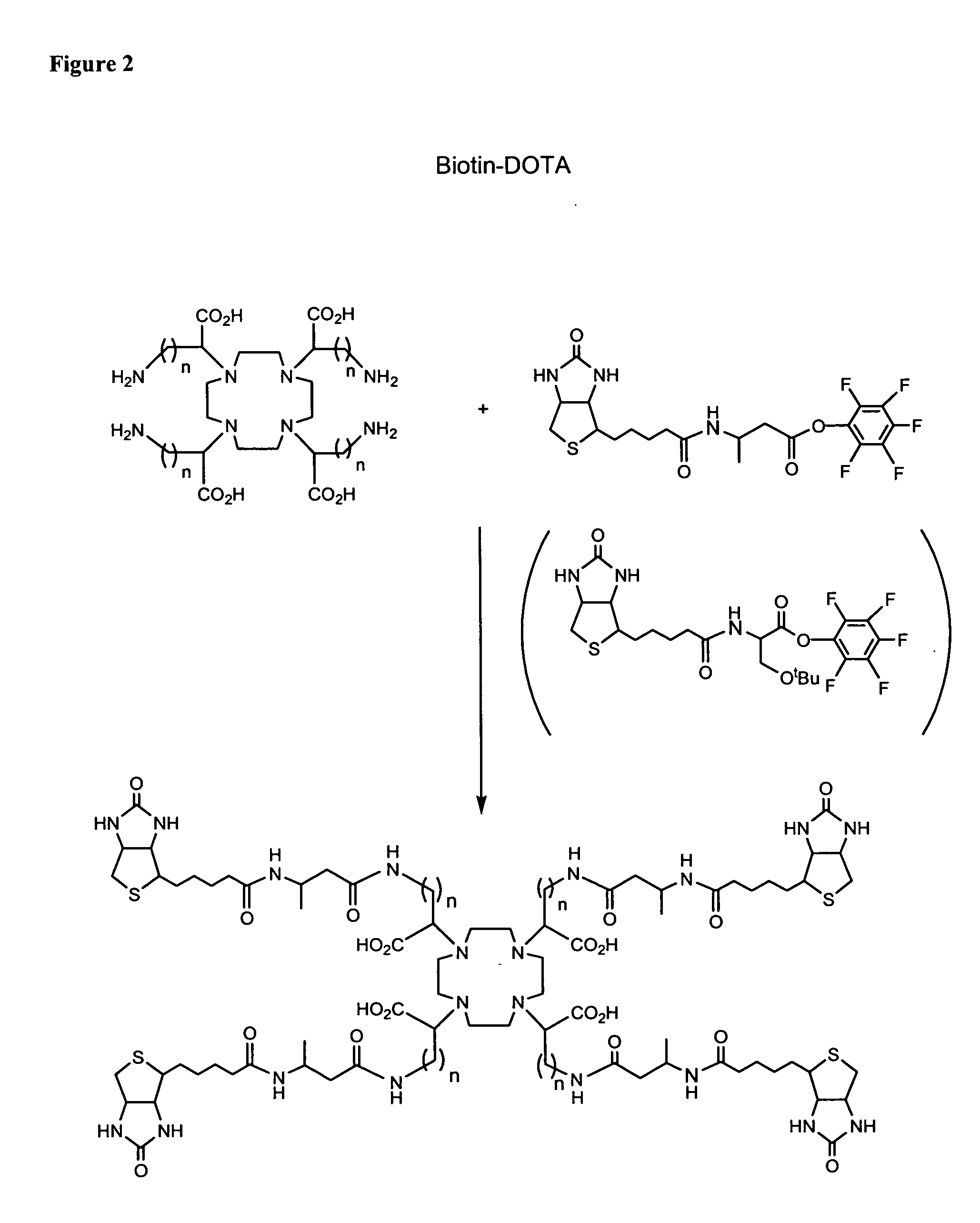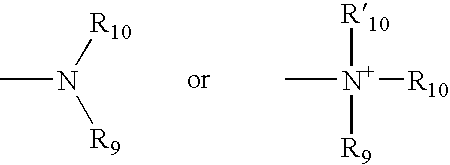Polybiotin compounds for magnetic resonance imaging and drug delivery
a technology of magnetic resonance imaging and polybiotin, applied in the field of magnetic resonance imaging, can solve the problems of preventing the acquisition of high-quality images and obscuring the visualization of the target si
- Summary
- Abstract
- Description
- Claims
- Application Information
AI Technical Summary
Benefits of technology
Problems solved by technology
Method used
Image
Examples
example 1
[0314]
A. (−)-6-Amino-2-hydroxyhexanoic Acid [Chem. Pharm. Bull. 1976, 24, 621]
[0315] An aqueous solution (100 ml) of sodium nitrite (25.9 g, 0.36 mole) was gradually added to a stirred solution of L-lysine hydrate (19.0 g, 0.097 mole) in 10% sulfuric acid (250 mL) at 45-50° C. over a 2 hr period. After addition was complete, the solution was stirred at 25° C. for 3 hr. Urea was added to the solution in order to decompose nitric acid formed in the reaction process and the aqueous solution was poured on to an ion exchange column (Amberlite IR-120, H+ form, 200 ml). After the column was thoroughly washed with water, it was eluted with aqueous ammonium hydroxide until the eluant became negative to ninhydrin test. Combined fractions were evaporated in vacuo, which gave a yellow oil, 7.5 grams.
B. (S)-6-[[(Phenylmethoxy)carbonyl]amino]-2-hydroxyhexanoic Acid
[0316] The aminohydroxy acid (7.5 g, 51.0 mmole) from Part A in a 1 N NaOH solution (50 ml) at 0° C. (ice bath) was adjusted to pH ...
example 2
[0321]
A. 2,3,5,6-Tetrafluorophenyl Trifluoroacetate (TFP-OTFA)
[0322] Using a known procedure [Nucleic Acids Res 1993, 21,145], a mixture of 2,3,5,6-tetrafluorophenol (55.2 g, 0.33 mol), trifluoroacetic anhydride (60 mL, 0.42 mol) and boron trifluoride etherate (0.5 mL) was refluxed for 16 hr. Trifluoroacetic anhydride and trifluoroacetic acid were removed by distillation at atmospheric pressure. The trifluoroacetic anhydride fraction (bp 40° C.) was returned to the reaction mixture along with 0.5 mL of boron trifluoride etherate, and the mixture was refluxed for 24 hr. This process was repeated two times to ensure complete reaction. After distillation at atmospheric pressure, the desired product was collected at 62° C. / 45 mm (45° C. / 18 mm) as a colorless liquid: yield: 81.3 (93%); d=1.52 g / mL; IR (CHCl3) 3010, 1815, 1525, 1485, 1235, t180, and 955 cm−1.
B. Synthesis of Biotin Tetrafluorophenyl Ester
[0323] Preparation of the TFP ester of biotin was accomplished as described by Wil...
example 3
[0326]
[0327] To a 0.5 g (0.65 mmol) quantity of the DOTA-amine analog acid dissolved in 20 mL of DMF under a nitrogen atmosphere was added 1 mL of triethylamine followed by 2.4 g (12.76 mmol) of 3-(biotinamido)butyrate tetrafluorophenyl Ester. The reaction was stirred at 25° C. for 24 h and solvent was removed under vacuum. The residue was triturated with acetonitrile and filtered. The isolated solid was dried under high vacuum. The product is purified by reverse phase HPLC.
PUM
| Property | Measurement | Unit |
|---|---|---|
| emission peak | aaaaa | aaaaa |
| emission peak | aaaaa | aaaaa |
| diameter | aaaaa | aaaaa |
Abstract
Description
Claims
Application Information
 Login to View More
Login to View More - R&D
- Intellectual Property
- Life Sciences
- Materials
- Tech Scout
- Unparalleled Data Quality
- Higher Quality Content
- 60% Fewer Hallucinations
Browse by: Latest US Patents, China's latest patents, Technical Efficacy Thesaurus, Application Domain, Technology Topic, Popular Technical Reports.
© 2025 PatSnap. All rights reserved.Legal|Privacy policy|Modern Slavery Act Transparency Statement|Sitemap|About US| Contact US: help@patsnap.com



